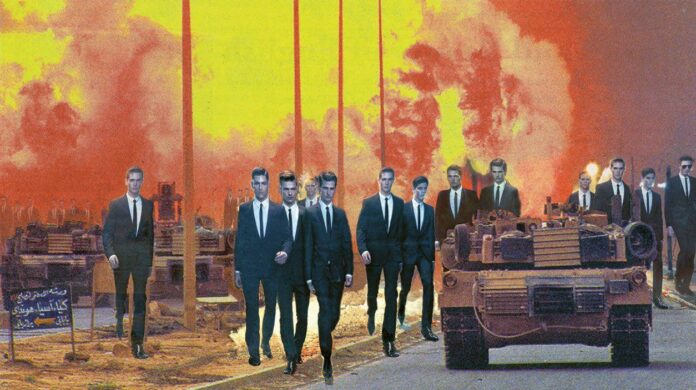Vitamin C+: Collage in Contemporary Art, contributors include Yuval Etgar, Phaidon, 304pp, £49.95 (hb)
Phaidon’s latest contemporary art survey in the Vitamin series focuses on the underrated medium of collage. A publisher’s statement as: “an artistic language comprising found images, fragmentary forms, and unexpected juxtapositions. While it first gained status as high art in the early 20th century, the past decade has seen a fresh explosion of artists using this dynamic and experimental approach to image making.” A selection of curators, directors and writers (including myself) nominated more than 100 artists prominent in the field such as Clotilde Jiménez of Mexico, Mohamed Bourouissa of Algeria, the American Martha Rosler and the UK-born Georgie Hopton. “The end result features both analogue and digital approaches, overturning any narrow definitions and revealing collage as one of the most exciting and varied art creative processes used by artists today,” writes the publication editor, Rebecca Morrill.

Rediscovering Black Portraiture, Peter Brathwaite, Getty Publications, 168pp, £35 (hb)
Prompted by the Getty Museum Challenge—which involved using household items to restage famous paintings—the UK opera singer Peter Brathwaite began researching more than 100 works of art during the first Covid-19 lockdown in 2020 featuring Black sitters. “Scrolling through social media, my feed was awash with people who had taken up the challenge, re-creating their favourite artworks using everyday items found at home. The submissions exposed the depressing truth that most of the so-called great artworks we choose to platform and celebrate do not tell the stories of people of colour—the global majority,” he writes in the introduction. Works re-created by Brathwaite include The Adoration of the Magi (1480-90) by Georges Trubert, Portrait of an Unknown Man (around 1525) by Jan Mostaert, and Rice n Peas (1982) by Sonia Boyce.

Pilgrims visiting the Ka’bah, the cube-shaped structure at the centre of the HolyMosque © Emad Alhusayni
Makkah: The Holy City of Islam, Meraj N. Mirza, Assouline, 190pp, £1,000 (hb)
This lavish luxury publication (note the price tag) delves into the development of Makkah (Mecca) the holiest site in Islam. In the 1970s, around 100,000 to 200,000 people made the annual hajj pilgrimage to Mecca each year; that figure reached one million in 2022.
The book explores the “wonders found within the city… discover the Ka’bah, the cube-shaped structure at the centre of the HolyMosque, believed to have been built by Adam and then rebuilt by Abraham andhis son Ishmael.” Heritage landmarks such as the Makkah Clock, the world’s largest timepiece that overlooks the Grand Mosque of Mecca, are discussed. In 2015 , we reported however that “construction works have already transformed Mecca and Medina into cities without a past, dominated by skyscrapers”.
Contemporary Art (Art Essentials), Natalie Rudd, Thames & Hudson, 176pp, £12.99 (pb)
Contemporary Art (Art Essentials) promises to be “a candid account of contemporary art that identifies key themes and approaches, providing the reader with a clear understanding of the contexts in which art is being made today,” says a publisher’s statement. Chapters cover a range of topics such as, “What are the rules of the game?”, “What do artists do all day?” and “can art build a better world?”. The latter chapter “highlights how artists have used their status and global reach to effect change.” Artists discussed include Yayoi Kusama, Takashi Murakami, Banksy, Cindy Sherman and Sophie Calle.

The cathedral at Ani, the “city of 1001 churches”, and former capital of Armenia, now in Turkey. Earthquakes, changing rulers and shifting trade routes led to the abandonment of the Medieval city © Hunghsi Chao/World Monuments Fund
Amongst the Ruins: Why Civilisations Collapse and Communities Disappear, John Darlington, Yale University Press, 304pp, £25 (hb)
John Darlington, the executive director of World Monuments Fund Britain, explores how and why ancient civilisations and ruling elites have vanished over the past 3,000 years, arguably highlighting how history repeats itself. Darlington says: “In the book, I take the biggest potential lessons from history—the loss of civilisations, big or small, ancient or more recent, and across all the world’s continents—and seek out common themes as to why they have disappeared.” The collapse of Chile’s saltpetre mines, which drove half the Chilean economy in around 1900, is for instance mirrored by the imminent end of fossil fuels as the world turns to renewable energy sources, Darlington says. Another section focuses on an earthquake in June 1692 that destroyed Port Royal, Jamaica’s capital city, bringing to mind the destruction wrought by the recent earthquakes that devastated Turkey and Syria.

























